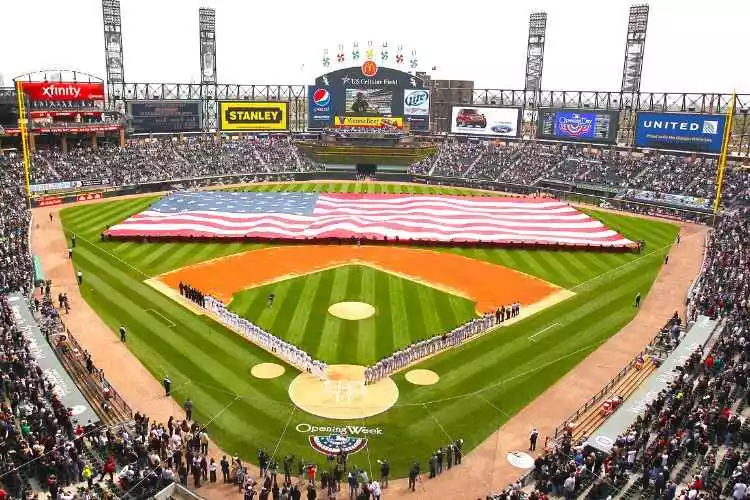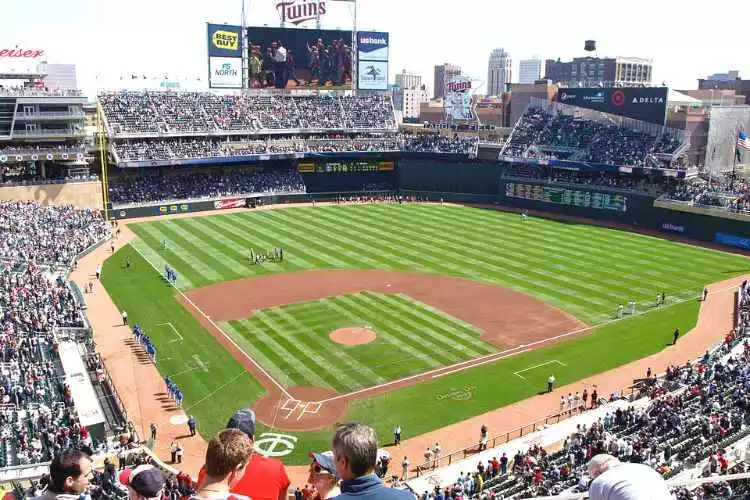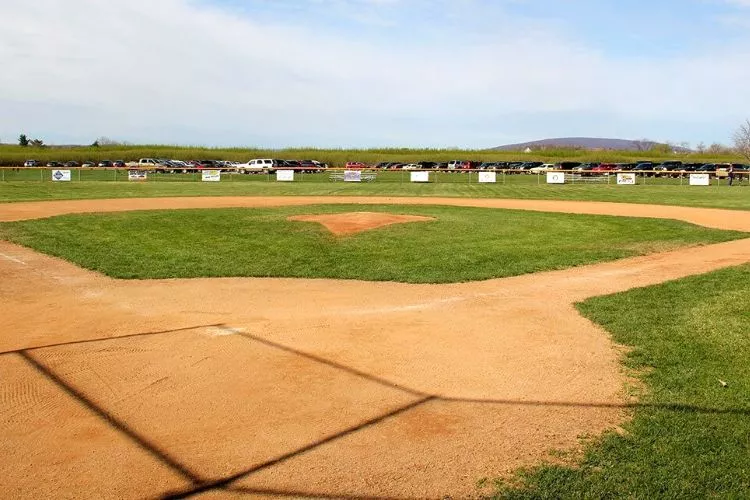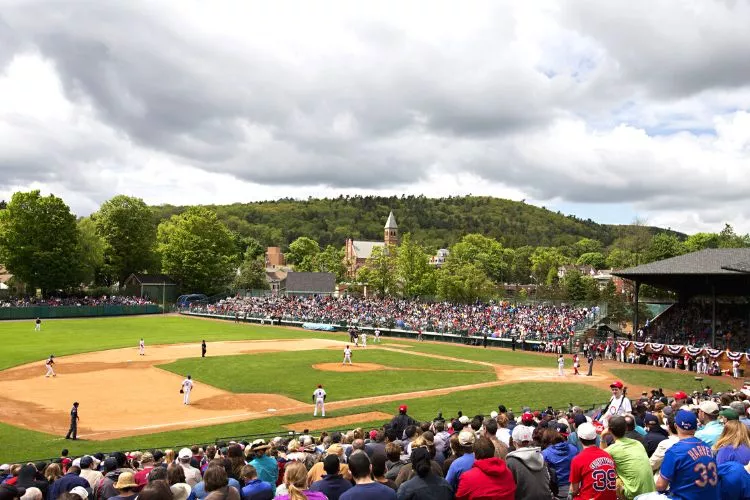In baseball, the size of the field varies with the location and level of the play. The average size of a baseball field is a balance between tradition and practicality. The needs of the players and fans and the stadium’s structure are also considered.
Do you know what is the average size of a baseball field?
Well, all the professional baseball fields are 4.5 acres down the foul lines, 315 feet to the right field, and 400 feet to the center field. But these measurements are not fixed and change depending on various factors.

What is the Average Size of a Baseball field? (Actual Answer)
There is no definite and fixed size of a baseball field. Some sections of the field have definite measurements, but not all. And depending on the pre-existing stadium, the fixed measurements can also be slightly changed. But in most baseball fields, you can find these standard layouts.
- Baselines: We all know that there are four bases in any baseball field, and the straight lines that can be located between two adjacent bases are called baseline.90 feet is the average size of the baselines. So each base is 90 feet away from the other.
- Outfield: The area of a baseball field that is beyond the infield is called the outfield. Outfielders are primarily responsible for catching balls hit by the batter. A typical outfield is 330 feet long.
- Mound: Mound, pitcher’s mound, or the hill all direct the raised dirt area in the center of the infield. It is the area from where a pitcher pitches. The average diameter of the pitching mound is 18 feet, and its average height is 10 feet.
- Infield: The infield is the total enclosed area by the three baseball bases and home plate.
The distance between home plate and the second base is 127 feet and 3-3/8 inches. The distance between the home plate and the backstop is 60 feet. The distance between home plate to left field is 320 to 350 feet. And the distance between the home plate and center field is 400 feet or more.
What is the standard size of a baseball field?
Typically the width of a baseball field varies between 90 to 120 feet. For the length, this measurement varies between 150 to 200 feet. These are standard measurements, but these can vary depending on the level of play. For instance, a field for Little League has to be smaller than MLF.

The quality of the play is also affected by the size of a baseball field. In smaller fields, the pitchers get more benefits, resulting in a low-scoring match. Similarly, in the larger fields, we can notice more home runs. However, the size of a baseball field is in the hands of the organizers and the governing bodies.
Factors That Affect Field Size
Some key factors directly impact defining the size of a baseball field.

Level of play
The size and dimensions of a baseball field differ with the level of play. If you notice carefully, you can easily find that the gully leagues or any youth or amateur league occurs in comparatively smaller fields. And professional baseball matches are being played on larger fields.
Park factors
The size of the baseball field is also affected by the layout and position of the stadium or park. If the pre-existing stadium is in an odd position, the organizers have to reduce the overall size of the field.
Weather and climate
Weather or climate plays a very crucial role in any field. If it is rainy weather, then you need to give a special emphasis on the drainage of the field. Heavy rains can make the field muddy and slippery. While running on such a field, the players may face injuries. So in some cases, to prevent these injuries, the organizers reduce the size of the baseball field.
Similarly, in the heavy wind, the game also gets affected. Strong wind de-tracks a flying ball from its projection. Sometimes, the field position also gets adjusted to counter this type of heavy wind.
Moreover, baseball fields can be adjusted based on weather and climate conditions to ensure that the game is fair and safe for all players.
The History of Baseball Field Dimensions
The field dimensions of baseball were not fixed from the beginning. After going through a lot of evolution, the current scenario has been achieved.

Evolution of field dimensions
In the early phases, the dimensions of the baseball fields were not standardized, and there was no official rulebook for the game. But as the game gained popularity, various league organizers and organizations began to adopt their own rules and regulations, and they abruptly finalized the field’s dimensions.
In 1857, the National Association of Baseball Players (NABBP) was founded. And this official first governing body of baseball set most of the rules for baseball, including the field measurements. The National League (NL) comes. It was the first professional baseball league and set its own rules for this game.
Modern dimensions
Today, Major League Baseball (MLB)and the International Baseball Federation are the two giants of this field. They regulate all baseball fields and have fixed specific dimensions for different levels of play.
According to the current rules of MLB, for a professional baseball match, the distance between the home plate and the outfield fences of a field must be between 325 and 400 feet, and the distance to the foul poles has to be comparatively less. The distance between the home plate and the pitcher’s mound has to be 60 feet, 6 inches. Similarly, there are specific rules for the amateur and youth leagues.
Frequently Asked Questions (FAQs)
Are MLB fields different sizes?
You cannot find any MLB field with an almost similar structure to any other field. But some aspects are common in all fields. So the overall size of the field may differ, but the length between home plate and outfield fences has to be within 325 and 400 feet.
Similarly, The distance between the home plate and the pitcher’s mound has to be 60 feet, 6 inches. Similarly, there are some specific distances. So it is very hard to find two MLB fields of the same size.
Is the college baseball field smaller than MLB?
Yes, the college baseball field is smaller than the professional MLB field.
What MLB field is the smallest?
The Tropicana Field has the smallest baseball stadium at the moment. It was opened in 2019, and the current seating capacity of this field is only 25K.
Which ballpark has the deepest outfield?
Comerica Park has the deepest (420-foot) outfield. It was opened in 2000 and is situated in Downtown Detroit.
Who has the largest baseball field?
Currently, Oakland Coliseum is the largest baseball field. It is situated in California and has a capacity of 56,782.
Conclusion
However, the average size of a baseball field is influenced by the needs of players and fans, resulting in a combined outcome of tradition and practicality. Various factors play key roles in determining the average size of a baseball field.
The dimensions of a baseball field have evolved with time and vary based on the level of play and other factors.
